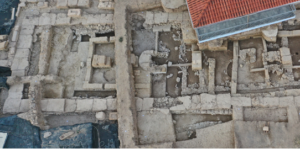The archaeological finds kept coming for a team of 50 researchers on the Greek island of Evia. But the kicker may have been locating 2,700-year-old altars full of precious jewels and historical remnants.
Nearby the ancient Temple of Amarysia Artemis on the country’s second-largest island, archaeologists discovered another temple—this one from the 7th century BC. And it came full of highly used altars, according to a translated statement from Greece’s Ministry of Culture.
Notable for its 100-foot length, symbolic of the hundred-meter temples of this period in ancient Greece, the find was fully uncovered in 2023 and features exterior walls and an arch on the west side. More intriguing, though, was the “significant number of structures found inside it,” the team said. These structures included several hearths that were likely used as altars.
Paris Encircled: Farmers Determined to Hold Ground Amidst Highway Blockades
A horseshoe-shaped altar was the most unique of the designs, and thick layers of ash—which was rich in charred bones—showed steady use. “The possibility that some of them predate the temple cannot be ruled out,” the statement reads. “The first level of use of the horseshoe altar yielded pottery dating to the end of the 8th century BC.”
Continue here: Popular Mechanics
Ask me anything
Explore related questions





